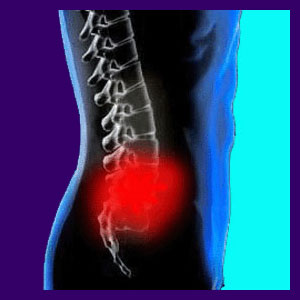
Facet hypertrophy is a diagnosis which is often blamed for creating the ideal circumstances for chronic back pain. After all, hypertrophic changes to the spinal joints will not get better with time. Instead, they will almost certainly get worse. Hypertrophy is a word which means abnormal enlargement and inflammation of the joint structures.
Hypertrophy of the spinal facet joints is the process which is theorized to enact painful symptoms and is usually diagnosed as facet joint syndrome. The condition is a normal degenerative process that occurs in the spine as we age. The majority of people will develop comparable arthritis in the spine as they get older. A minority of these people will experience any pain in their spinal joints. Only a small percentage of this minority will actually have pain due to their degenerated facet joints. The rest are actually suffering from some other form of back or neck pain that has been misdiagnosed.
This essay explores inflammation of the spinal facet joints as a potential cause of back and neck pain.
Facet Hypertrophy Definition
The facet joints are the posterior areas where an individual spinal bone meets the vertebrae above and below it. These joints provide flexibility and structural stability for the spine. The facet joints are surrounded by a synovial capsule of fluid, cartilage and connective tissue. This protective capsule insures fluidity in the joint and effortless, pain-free operation.
As we age, the protective mechanisms in this capsule deteriorate and create what doctors call facet syndrome. This condition can cause true physical pain, but is more often a scapegoat on which to blame otherwise idiopathic expressions of back ache. Diagnostic research clearly shows no correlation between typical facet joint deterioration and the expression of dorsalgia.
Facet Hypertrophy Patients
Patients theorized to be suffering from facet syndrome are immediately affected by the nocebo effect of the pronounced diagnosis. The very idea that their spines are degenerated is enough to scare some patients half to death. It is no surprise that most patients have a increase in the severity of their symptoms after positive diagnosis of this condition.
Doctors do not have a clear explanation why almost all of us show identical physical signs of vertebral facet joint degeneration, yet only some of us experience pain and symptoms. There is also no explanation why so many back pain treatments directed at the physical cause of this condition demonstrate such poor results. Diagnosed patients are left feeling hopeless and permanently damaged by their defective facet joints. Meanwhile, medical science makes billions of dollars treating this condition; usually with the aforementioned poor results.
Hypertrophic Facet Joints
Most interestingly, facet joint diagnoses typically occur between the ages of 30 and 55, which do not represent the height of joint degeneration, but are definitely the ages of responsibility. This may point to evidence of a mindbody process at work in many patients, although there are certainly other structural explanations possible, as well. Remember, if hypertrophy continue to worsen for life, but symptoms are usually linked to less severe physical cases of mild to moderate deterioration, then the structural model of pain does not seem to apply here. Learn the facts about the mostly innocent nature of most hypertrophic conditions in the facet joints before seeking treatment.
Our proven pain relief program has provided lasting and complete symptomatic resolution for countless people who were diagnosed with facet joint hypertrophy. You can access the program around the clock, worldwide, for immediate help.




